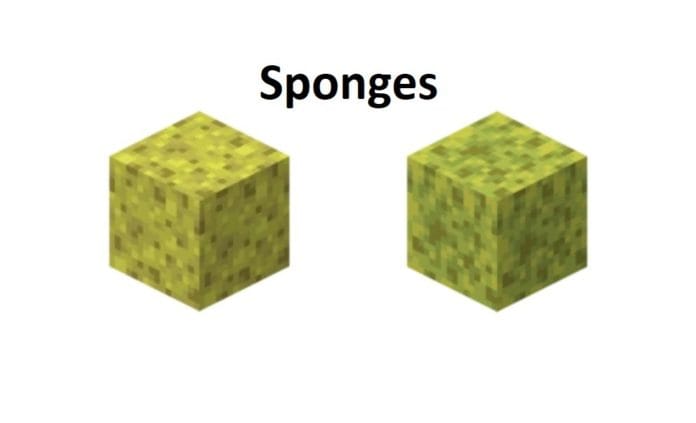When we talk about blocks in Minecraft the list is endless. Since the game is all about blocks, we have already talked about a few of them in our previous posts too. Today, I will be talking about another block in Minecraft called Sponge. A sponge is one of the many blocks in Minecraft such as Anvil, Shears, and Conduit. A sponge block allows players to remove water when placed nearby any wet place such as in the pond.
When a sponge is placed nearby water its quickly starts absorbing the water and removes it. In other words, a sponge instantly absorbs nearby water when it is placed next to water or when water comes into contact with it. So, if need a sponge but don’t know how to get sponges in Minecraft then check out the quick guide below.
How to Get Sponges in Minecraft
You can get sponges in three different ways listed below.
- Mob loot or by killing Elder guardians
The first way is where you can get or obtain a sponge by mob loot or by killing the Elder guardians which is the largest aquatic mob found in Minecraft.
- Natural generation
The second way is where you can get a sponge by naturally generating it. You can generate a sponge from Ocean monuments rooms. Ocean monuments are rare underwater structures found in deep oceans biome and variants. Each monuments room contains an average of 30 wet sponges. A sponge can also be mined by hand or with any tool, but hoes break sponges block the fastest compared to other tools.
- Smelting
The third and the way to get a sponge in Minecraft is Smelting. You can place a wet sponge nearby any fuel or flammable things such as in Nether, Overworld Planks, Charcoal, Coal, or Log.

Using a Sponge in Minecraft
You can use sponges in Minecraft to remove water when placed nearby. A sponge instantly absorbs nearby water when it is placed next to water or when water comes into contact with it. A sponge can absorb a lot of water but not more than 65 blocks of water.
However, to make the best use of sponges, you should place them on source blocks of water to make a more permanent removal of water.








